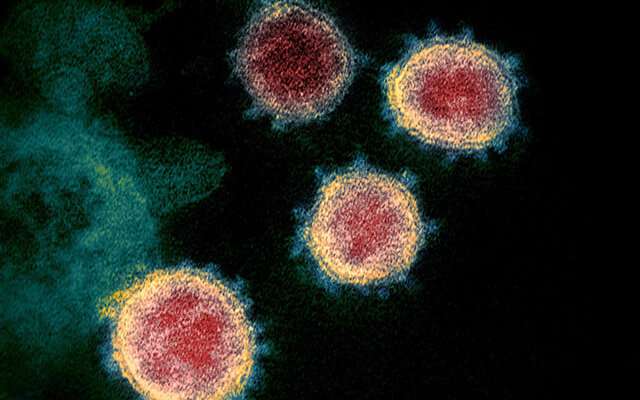New clues to how SARS-CoV-2 infects cells

The molecular details of how SARS-CoV-2 enters cells and infects them are still not clear. Researchers at Uppsala University have tested the bioinformatic predictions made by another research group and have identified receptors that could be important players in the process. The results are presented in the journal Science Signaling and at the AAAS Annual Meeting held this week.
The spike protein of SARS-CoV-2 binds the protein ACE2 on the outside of the human cell. This triggers a series of events that leads to invasion of the cell by the virus. The molecular details of this process have remained obscure despite much research on SARS-CoV-2 and other coronaviruses. Moreover, ACE2 is not present in human lung cells, which would suggest that different players are involved when the virus infects these cells.
A recent study by researchers at Uppsala University sheds some new light on the issues. The study was published back-to-back with a study by an international team led by Dr. Toby Gibson at the European Molecular Biology Laboratory (EMBL) in Heidelberg. The Gibson study predicted potential interactions that could be of importance for the entry of SARS-CoV-2 into the cell.
The researchers at Uppsala University tested the bioinformatic predictions in vitro and could show that ACE2 and the potential co-receptor integrin beta3 interact with important players involved in endocytosis and autophagy—cellular processes of uptake and disposal of substances. This means that these processes might be hijacked by the virus during infection.
"The Gibson team is world leading in terms of the bioinformatic analysis of these types of interactions, and we were excited to follow up on their predictions," says Professor Ylva Ivarsson, who headed the Uppsala study. "Our results also helped them to improve their analysis. It was an easy decision to engage in this project, as our lab has a strong interest in host-pathogen protein-protein interactions."
More information: Johanna Kliche et al. Cytoplasmic short linear motifs in ACE2 and integrin β3 link SARS-CoV-2 host cell receptors to mediators of endocytosis and autophagy, Science Signaling (2021). DOI: 10.1126/scisignal.abf1117



















